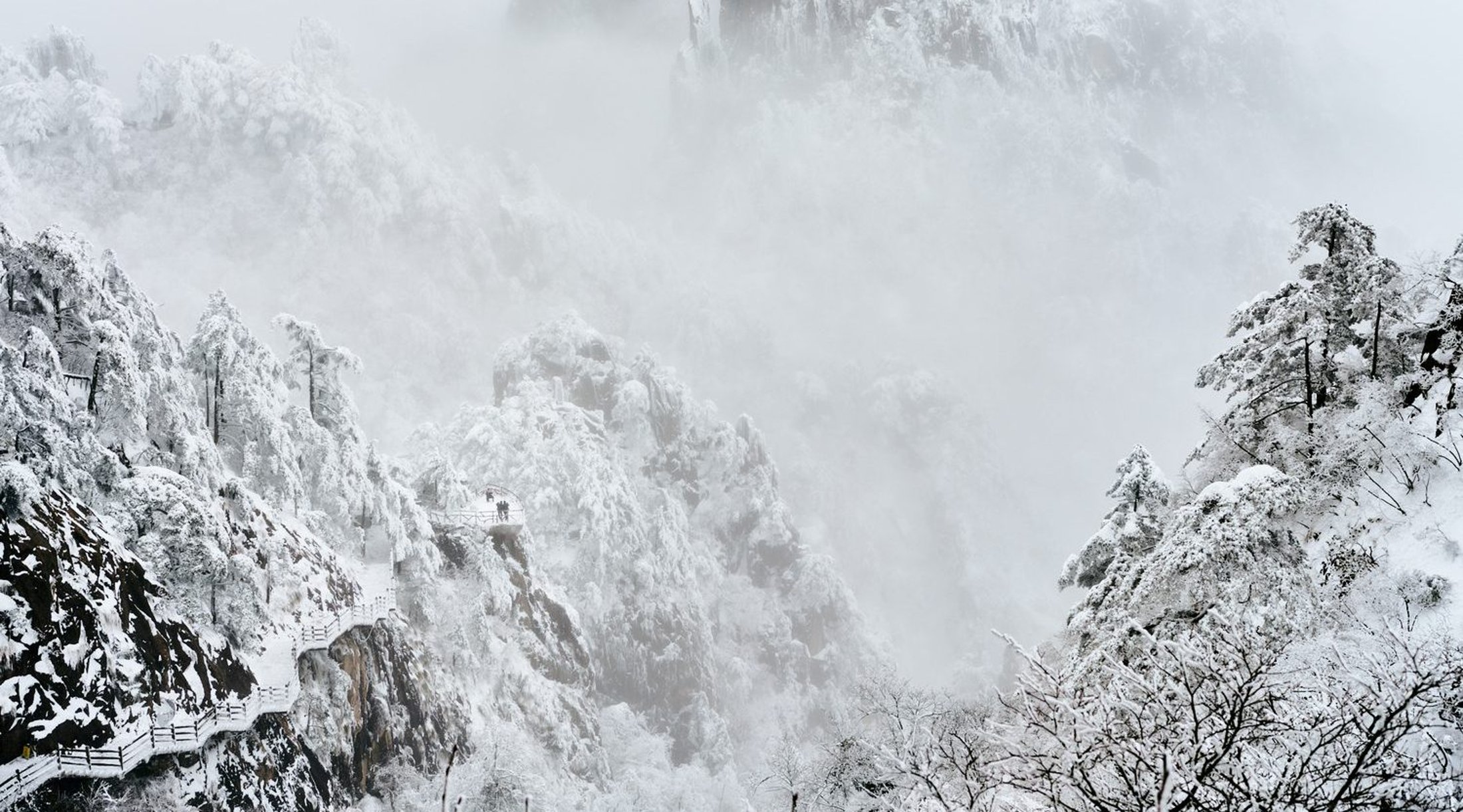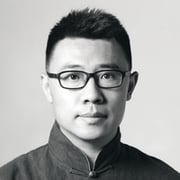“At a certain moment, seeing a specific character or scene, it feels as though time is standing still, as if I have gone back in time,” says the photographer Yan Sun. In Mountains and Rivers, Sun’s elegant and engrossing landscapes, time is as much a subject as place.
The ‘decisive moment’ is a term known to photographers the world over. A man caught in mid air, leaping across a puddle. A soldier falling in battle. But what of the quiet images? Which moment do they capture? Sun’s landscapes are filled with a confluence of moments—historical, personal, and contemporary. “I want to express temporality in a large space. This ‘time’ includes the history of China as well as my own personal memories,” notes Sun. The photographs do not jump out at the viewer. Rather they slowly envelop, like a mountain fog reaching beyond the picture’s borders, pulling us out of time and into the image.

The scenes captured in Mountains and Rivers are deceptively simple. At first glance, the images may appear empty of people yet a closer look reveals hints of contemporary life. Miniscule tourists gaze over a winter landscape, a mountain trail bears a line of sightseeing buses, a factory or manufacturing plant blends into the gray scrub of a hillside. At times, one might overlook these signs of human life. How could they compete with the scenes that they have entered? Yet that is their lineage.
Sun’s photographs are descendants of traditional Chinese painting—scenes in which human presence is dwarfed by the vastness of landscape. “They are not completely natural and there are quite a few traces of human beings. From the point of view of topological photography, the process of human modernization and construction can be seen between these mountains and water. Mountains and water, in turn, are very important visual elements and historical clues in traditional Chinese culture,” explains Sun.

Many of the scenes are inspired by paintings or historical events. “The photo Tattooed Swimmer was taken by the Sishui River in Shandong Province in northern China. Since the farming era, it has been the source of agricultural irrigation in the Shandong Peninsula, as well as a place of war,” Sun says.
“In the late Eastern Han Dynasty (199 AD), Prime Minister Cao Cao ordered his army to block the flow of the Sishui River, causing the water level to rise, then suddenly released the gates, creating an artificial flood that inundated the cities downstream. This tactic was called a ‘water attack.’ Cao Cao used the water of the Si River to defeat Lu Bu, the top-ranked martial arts general in Chinese history, killing him and drowning many of his soldiers. I am fascinated by the history of the Three Kingdoms. When I walked to the Sishui River, I happened to see a tattooed swimmer who stood motionless staring into the water. I felt a kind of superposition of multiple times and space, and so, naturally, I took a photo,” Sun explains.

Distance is a physical, temporal, and conceptual factor. Sun has lived in Macau, a special administrative region and tourist destination in the south of China, for a decade. “Every time I go back to my hometown in the north, I feel doubly close,” explains Sun. “Some days I just stand by, listening to the unfamiliar people in my hometown, watching their gestures and movements, feeling the space and environment around me. Although I grew up in the North, being far away from it has made me more of a spectator.”

Sun’s artistic studies began with painting before transitioning into digital media and photography. In his early years he explored various styles, influenced by Henri Cartier-Bresson, Robert Frank, and Daido Moriyama. With time his own voice began to emerge. “As I took more and more photos, I realized that I favored scenes that were maybe a bit boring. Most of the scenes in the images are rather empty, there may be a few characters, but most of them have no particular plot. These photographs are not easy to explain, but they have a special feeling for me.”
Though hard to describe, the images that Sun takes provoke the same ambiguous sensation in us as viewers. The feeling of entering a landscape and finding yourself subsumed is a familiar one; the sense of being made small by all that has passed before. To feel like a minute smudge in an environment that has existed throughout millenia, to see yourself and preceding generations there, to be aware of histories that may feel simply like stories or hauntings of a space, can carry a certain weight.

People Taking Pictures on Huangshan Mountain depicts a mountain that has been a subject of Chinese painting for many hundreds of years. “In those paintings, the characters are leading donkeys and wearing robes, while the people in my photograph are taking pictures with cell phones, in the same space as those ancient people, separated by centuries.
Strolling Person, an image taken in the Bailang River also spans time and space. On the day the photo was taken, there was a man staring at the river that I grew up hearing stories about from my family;stories about my father, my grandfather, and memories from even further back in time,” Sun notes. In Mountains and Rivers, Yan Sun has created a record of place, quietly alive to the cycles of history, both constant and changing.








